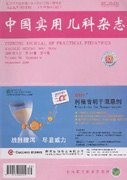The weight development can be used to indicate children’s nutritional status. But the assessment of stature development in children is more complicated, which involves genetics,endocrine,nutrition and bone metabolism. Parents should regularly follow up on the growth and development of children. At the same time,the growth data of children should be kept by parents. Pediatricians can obtain important information from the child’s development history to help assessment and diagnosis. Before dealing with this thorny problems of social and medical confusion,primary care pediatricians(PCP) should learn the knowledge of height growth during childhood,including the normal range and rules of height growth. Meanwhile,PCP need to understand the factors affecting the height growth in order to make proper management.

